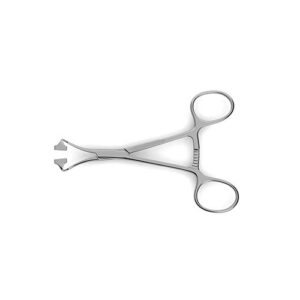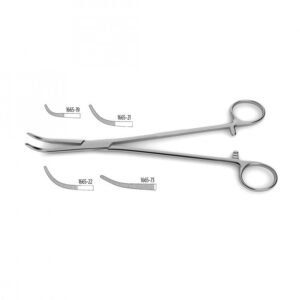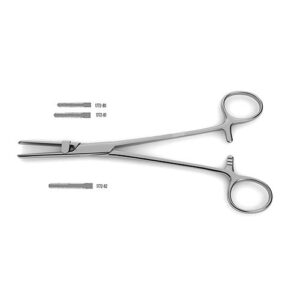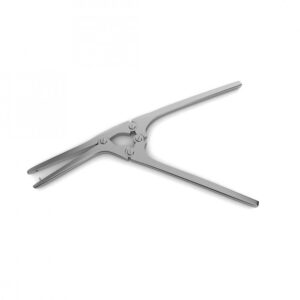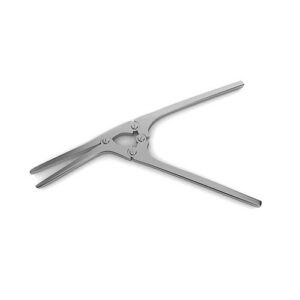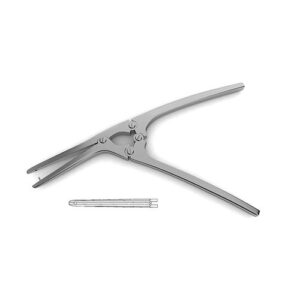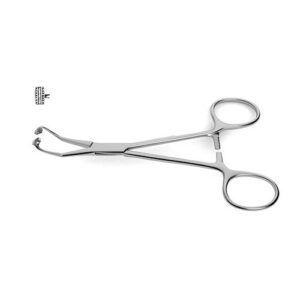Non-Perforating Towel Clamp
Non-Perforating Towel Clamp
Non-Perforating Towel Clamp features blunt jaw tips with a larger surface area to prevent penetrating drapes during a surgical procedure. This towel clamp can still securely hold drapes in place on a surgical site, and they are offered in different lengths to accommodate different sizes.
Ochsner Forceps
Horizontal serrations, 90 degree angle, very fine tips, 4-1/2" (11.4 cm)
Ochsner Forceps contain horizontally serrated jaws that are angled at 90 degrees and have very fine tips. Due to the style of the jaw on these short 4 ?" forceps, they can be used during surgery that involves the regulation of bleeding of small or delicate blood vessels. This instrument is also protected by the seemab surgical manufacturer warranty on any defects in materials or workmanship.
Ochsner-Baby Forceps
Overholt-Geissendoerfer Dissecting & Ligature Forceps
Dissecting & Ligature Forceps
Overholt-Geissendoerfer Dissecting and Ligature Forceps are available in different lengths with partially-serrated or fully-serrated curved jaws. Due to their long and slim frame, these forceps may be used during general operations to grasp blood vessels. In instances where the thoracic cavity may be involved, the curved pattern may be beneficial to get into structures that are less visible.
Pattern Tube Occluding Forceps
Pattern Tube Occluding Forceps
u-shaped guard, serrated jaws
U.S. Pattern Tube Occluding Forceps can be applied in a variety of surgeries to help in temporarily blocking tubes that contain blood or fluid. This forceps contain cross-serrated jaws and a u-shaped guard that applies force at different points. Standard or heavy jaws are offered in different lengths to be used for varying tube sizes.
Payr Pylorus Clamp
Payr Pylorus Clamp
w/ pin
Payr Pylorus Clamp can be useful during operations in which a part of the bowel needs to be removed. The clamp comes in varying jaw lengths and has a pin at the jaw tip to increase the chances of the jaws uniting. Different total lengths are presented in order to meet the needs of a range of medical procedures.
Payr Pylorus Clamps
Payr-Baby Pylorus Clamp
Jaw length 2-3/16" (55.0 mm), 5-3/4" (14.5 cm)
Payr-Baby Pylorus Clamp is a popular instrument typically used to treat pyloric stenosis, which is a term used to describe the narrow opening of the stomach that goes into the small intestine in a small child. During a Pyloromyotomy, for instance, the 2 3/16" jaw length can be used to temporarily close the end of bowel. This instrument also contains longitudinal serrations on the jaws that help assure a tight grip, as well as receiving the option of having the jaw tip with or without a pin.
Pean-Baby Forceps
Extra delicate, 5-1/2" (14.0 cm)
Pean-Baby Forceps is an extra delicate 5 ?" design used to control or stop blood flow from smaller vessels. The serrated jaws may assist in operations such as the removal of hemorrhoids or anal tumors. They also feature a ratchet mechanism to also serve as a clamp, and they have finger loops to provide better handling and guiding.
Peers Non-Perforating Towel Clamp
Peers Non-Perforating Towel Clamp
5-3/4" (14.5 cm)
Peers Non-Perforating Towel Clamp is crafted from premium grade German stainless steel to prevent it from corroding. The curved jaws have tips that are angled toward each other and have grooves on them to assist in a tight grasp while eliminating any puncture to the drapes being held on a surgical area.
Peet Splinter Forceps
Peet Splinter Forceps
angled, 4-1/2" (11.5 cm)
Peet Splinter Forceps are handcrafted from surgical grade German stainless steel. Designed with angled and serrated jaws, these forceps offer a strong, nonslip grip on the foreign material that is being removed. The finger rings offer a secure grip and comfort for the surgeon.
Penfield Watchmaker Forceps
Penfield Watchmaker Forceps
0.9 mm tip, 7" (17.8 cm)
Penfield Watchmaker Forceps are handcrafted from surgical grade German stainless steel. Designed with a 0.9 mm, pointed tip and stability pin for steady precision, these forceps are ideal for micro dissection. The flat, contoured handle offers a comfortable grip. They were originally designed for watchmaking, but their usefulness as a surgical instrument was quickly discovered.

